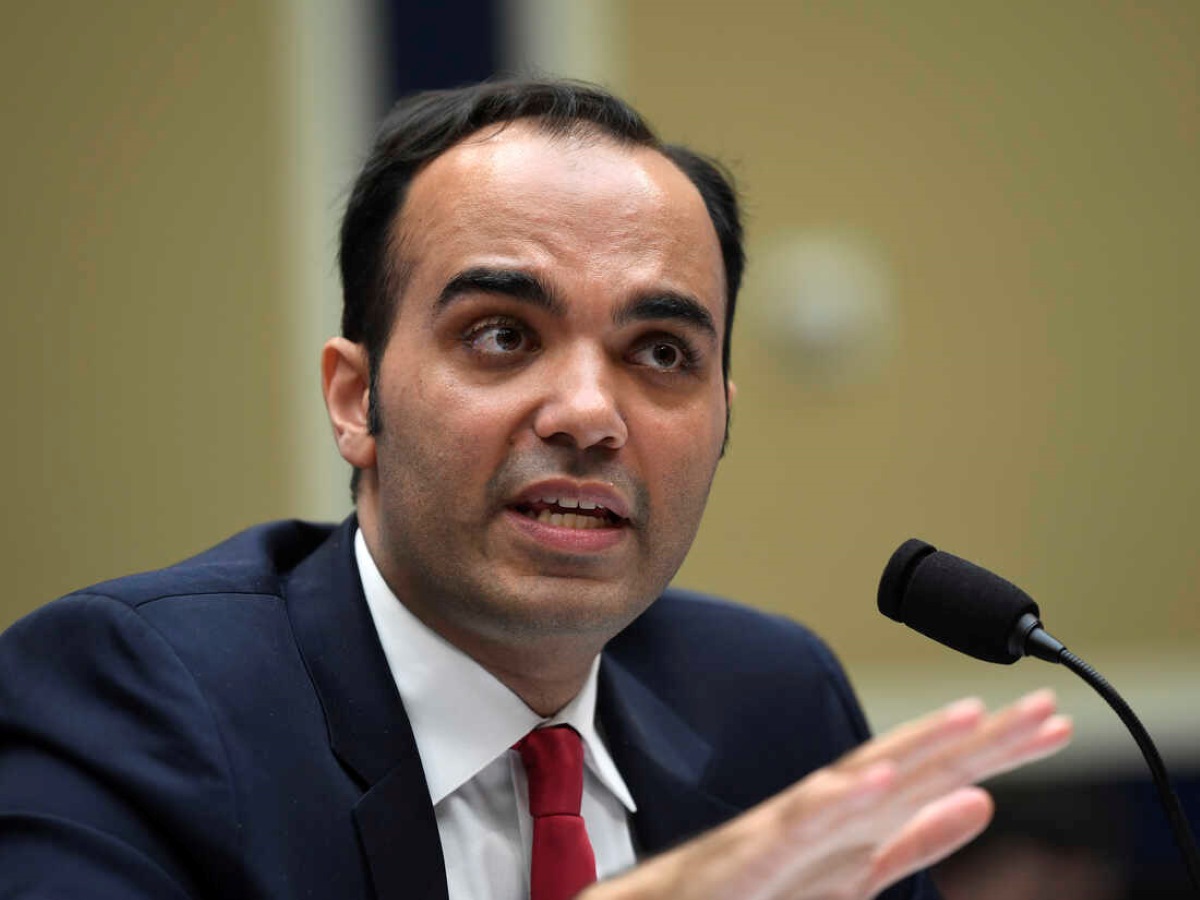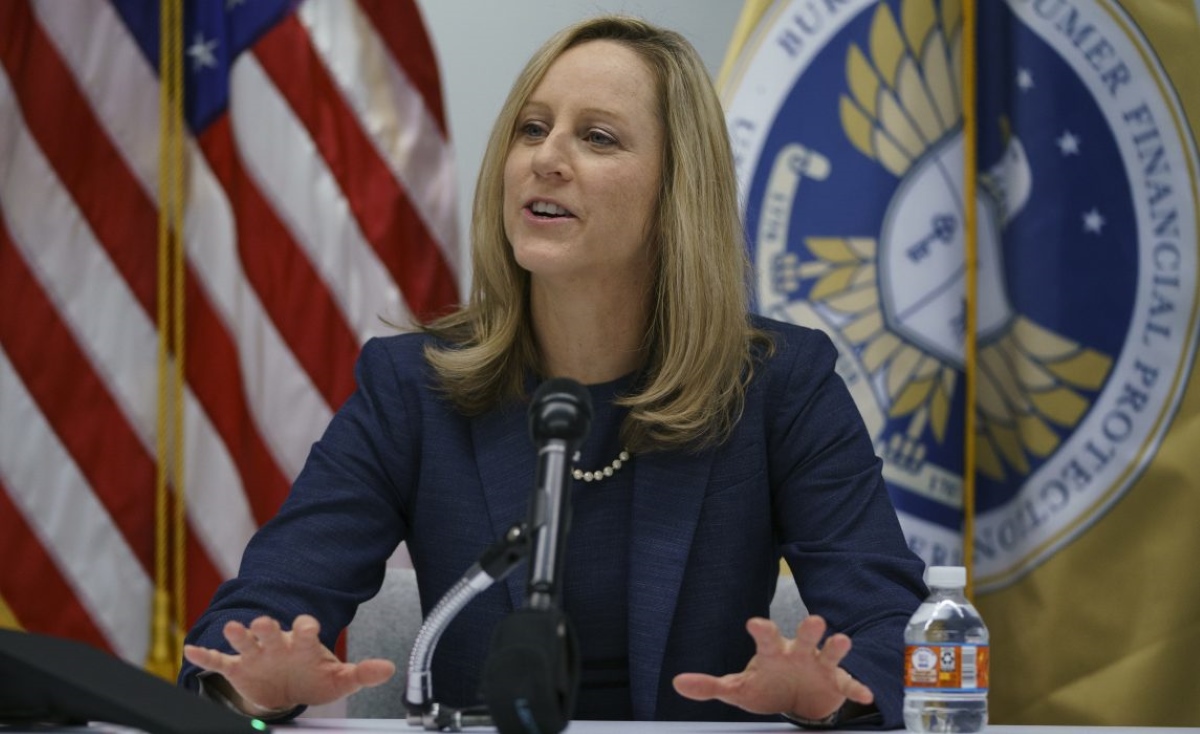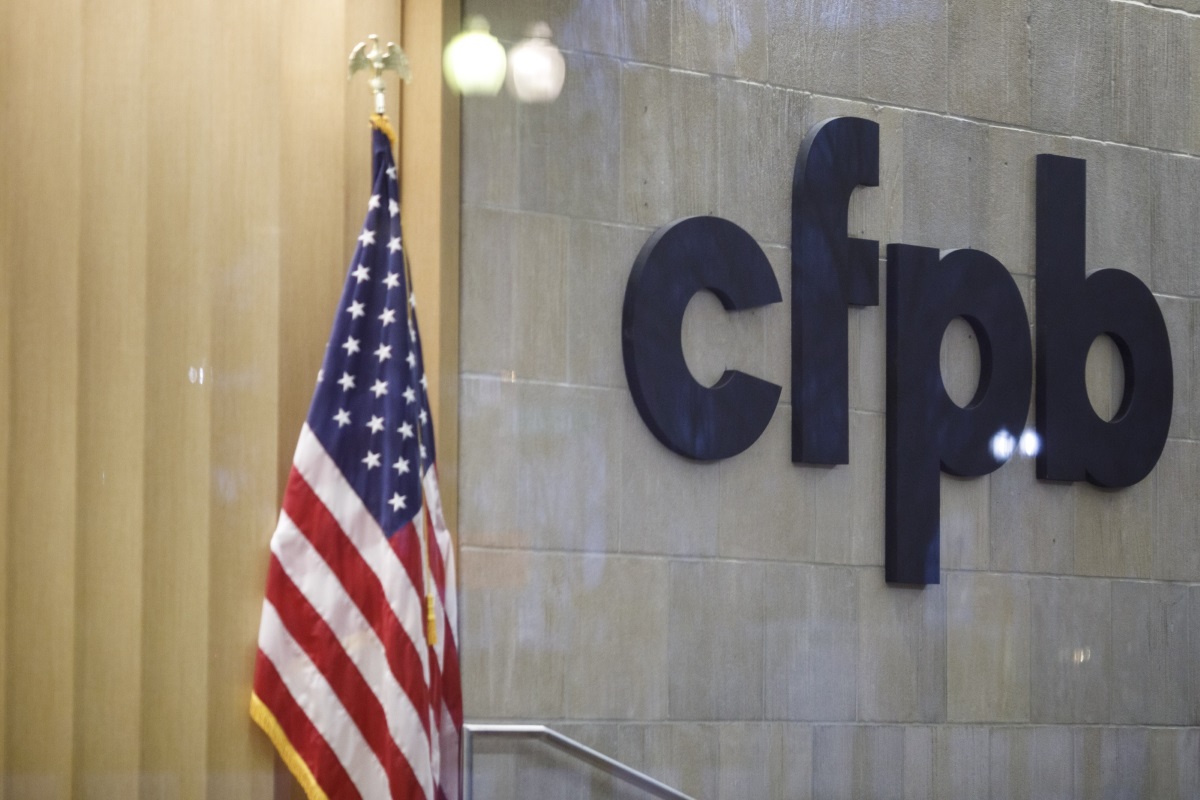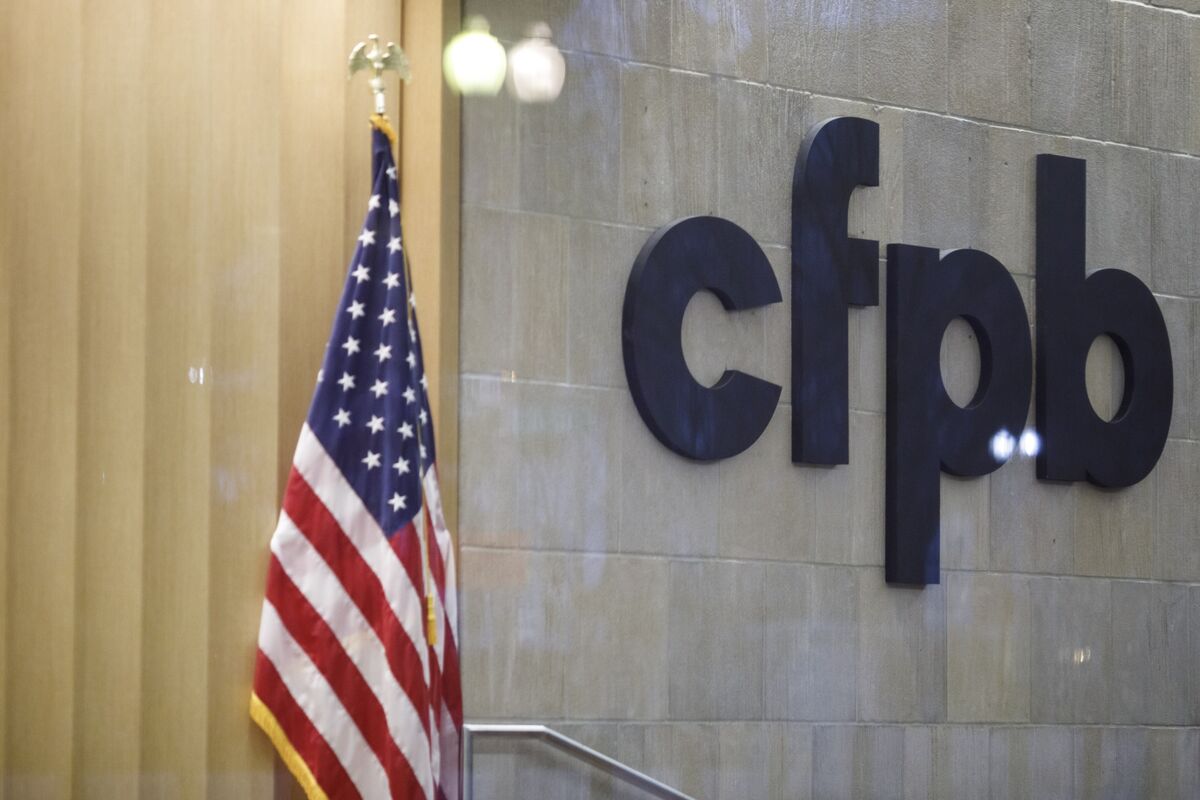Home>Finance>Which Attorney General Wrote The Letter To Richard Corday From The Consumer Financial Protection Bureau?


Finance
Which Attorney General Wrote The Letter To Richard Corday From The Consumer Financial Protection Bureau?
Modified: March 1, 2024
Discover which Attorney General sent a letter to Richard Corday from the Consumer Financial Protection Bureau. Explore the role of finance in this important correspondence.
(Many of the links in this article redirect to a specific reviewed product. Your purchase of these products through affiliate links helps to generate commission for LiveWell, at no extra cost. Learn more)
Table of Contents
Introduction
The Consumer Financial Protection Bureau (CFPB) is a federal agency responsible for protecting consumers in matters related to financial products and services. Established in 2010 under the Dodd-Frank Wall Street Reform and Consumer Protection Act, the CFPB has played a vital role in safeguarding consumer interests and promoting fair and transparent practices in the financial industry.
One notable event in the history of the CFPB was a letter sent to Richard Cordray, the former Director of the Bureau, which gained significant attention and sparked intrigue regarding its author. The letter, often referred to as the “Letter to Richard Cordray,” raised questions about the involvement of state Attorney Generals in the CFPB’s operations and decision-making process.
In this article, we will delve into the details surrounding the letter, analyze its content, and attempt to identify the Attorney General who wrote it. By examining the potential candidates and their potential motives, we aim to shed light on this intriguing piece of correspondence and the broader implications it may have had on the CFPB and the financial industry as a whole.
Background on the Consumer Financial Protection Bureau (CFPB)
The Consumer Financial Protection Bureau (CFPB) is a regulatory agency in the United States that was established in response to the financial crisis of 2008. Its primary mission is to protect consumers from unfair, deceptive, and abusive practices in the financial industry.
The CFPB was created as a part of the Dodd-Frank Wall Street Reform and Consumer Protection Act, which aimed to address the systemic risks of the financial industry and prevent predatory lending practices that had contributed to the housing market collapse. The bureau was designed to consolidate and strengthen consumer protection functions that were previously scattered across various government agencies.
Under the leadership of the Director, the CFPB has the authority to regulate financial institutions, enforce consumer protection laws, and provide consumers with information and resources to help them make informed financial decisions. It oversees a wide range of financial products and services, including mortgages, credit cards, student loans, payday loans, and more.
The CFPB carries out its mission through several key functions. It conducts research and collects data on consumer financial markets to better understand emerging trends and identify potential risks to consumer well-being. It also develops and enforces regulations to ensure that financial institutions comply with consumer protection laws. Additionally, the CFPB educates and empowers consumers by providing them with information, tools, and resources to make smart financial choices.
Since its inception, the CFPB has been at the forefront of protecting consumers from unfair and deceptive practices. It has taken legal action against numerous financial institutions for violations such as unlawful lending practices, hidden fees, and misleading advertising. The bureau has also implemented various consumer education initiatives and launched complaint portals, allowing individuals to voice their concerns and seek resolution.
However, the CFPB has often faced criticism and challenges from industry groups and lawmakers who believe it has overstepped its regulatory authority or lacks accountability. Nevertheless, the bureau remains a significant player in the consumer financial protection landscape and continues to play a critical role in safeguarding consumers’ interests.
Next, we will explore the letter sent to Richard Cordray, a pivotal moment that brought attention to the involvement and influence of state Attorney Generals within the CFPB.
The Letter from the CFPB to Richard Cordray
The “Letter to Richard Cordray” refers to a correspondance sent from the Consumer Financial Protection Bureau (CFPB) to Richard Cordray, who was then serving as the Director of the Bureau. This letter gained significant attention and speculation due to the mysterious nature of its authorship.
The content of the letter raised questions and concerns about the role of state Attorney Generals in the decision-making process of the CFPB. It discussed various policy issues, regulatory actions, and enforcement priorities, suggesting a level of involvement from outside entities beyond what was usually expected.
The letter contained a detailed analysis of consumer protection initiatives and included specific recommendations for enhancing the effectiveness of the CFPB’s operations. It highlighted the importance of collaboration between the federal agency and state Attorney Generals, as they often work hand-in-hand to enforce consumer protection laws and prosecute financial institutions that engage in fraudulent or deceptive practices.
The language and tone of the letter indicated a deep understanding of the CFPB’s functions and a genuine concern for consumer welfare. It emphasized the need for robust enforcement actions against predatory lenders, improved transparency in financial transactions, and expanded consumer education initiatives.
While the content of the letter was applauded by consumer advocacy groups, the mystery surrounding its authorship generated widespread speculation and curiosity. It led to theories about influential figures within the financial industry attempting to exert pressure on the CFPB’s decision-making process. Some suggested that state Attorney Generals, who often collaborate with the CFPB on consumer protection matters, might have authored the letter in an effort to shape the bureau’s policies to align with their own priorities.
As news of the mysterious letter spread, various legal and financial experts weighed in on its implications. Some argued that the involvement of state Attorney Generals could signal a shift in the balance of power between state and federal regulators, potentially impacting the efficiency and effectiveness of consumer protection efforts. Others raised concerns about potential conflicts of interest and the need for transparency in identifying the letter’s author.
In the next section, we will delve into an analysis of the content and language used in the letter to further understand its potential author and motives behind its creation.
Analysis of the Letter
The “Letter to Richard Cordray” from the Consumer Financial Protection Bureau (CFPB) contains several key elements that provide insights into its potential author and motives. Through an analysis of its content and language, we can attempt to unravel the mystery surrounding this letter.
Firstly, the letter demonstrates a deep understanding of the CFPB’s operations, policies, and priorities. It discusses specific regulatory actions and enforcement initiatives, indicating familiarity with the inner workings of the bureau. This suggests that the author is likely someone with direct knowledge of the CFPB’s activities, potentially an individual connected to the financial industry or a government official involved in consumer protection matters.
Secondly, the language used in the letter is professional, precise, and well-informed. It showcases a thorough understanding of financial jargon, legal frameworks, and consumer protection issues. The author employs persuasive arguments, highlighting the importance of robust enforcement actions, transparency in financial transactions, and enhanced consumer education initiatives. This indicates a level of expertise and authority in the field.
Thirdly, the letter emphasizes the crucial role of collaboration between the CFPB and state Attorney Generals. It acknowledges the partnership between these entities in enforcing consumer protection laws and prosecuting fraudulent financial institutions. This suggests that the author is likely a proponent of a cooperative approach, recognizing the significance of combined efforts in achieving effective consumer protection.
However, despite these clues, the actual author of the letter remains elusive. Speculation continues regarding the identity of the individual or group behind its creation. Some believe it may be the work of a coalition of state Attorney Generals or influential figures within the financial industry seeking to shape the CFPB’s policies.
It is important to note that the motivations behind the letter’s creation are subject to interpretation. While it aligns with the core mission of the CFPB to protect consumers from unfair practices, some have raised concerns about potential conflicts of interest or attempts to influence the bureau’s decision-making process.
In the following section, we will explore potential candidates for the authorship of the letter and examine their potential motives in greater detail.
Identifying the Author of the Letter
Identifying the exact author of the “Letter to Richard Cordray” from the Consumer Financial Protection Bureau (CFPB) remains a challenging task due to the lack of concrete evidence. However, there are several potential candidates who may have been involved in its creation.
One potential author could be a coalition of state Attorney Generals. These officials play a crucial role in consumer protection and often collaborate with the CFPB on enforcement actions. Their deep knowledge of consumer protection issues and familiarity with the CFPB’s operations make them plausible candidates. It is not uncommon for Attorney Generals to advocate for policies aligned with their respective state’s interests, and the letter might have been a collective effort to influence the CFPB’s priorities and decision-making process.
Another possibility is that the letter was authored by influential figures within the financial industry. These individuals or organizations could have a vested interest in shaping the CFPB’s policies to align with their own priorities. By advocating for specific regulatory actions or enforcement initiatives, they may seek to protect their business interests or influence the interpretation and application of consumer protection laws.
It is also worth considering the potential involvement of former or current CFPB employees or officials. These individuals would have an intricate understanding of the bureau’s inner workings, policies, and priorities. Their close proximity to the decision-making process and access to internal information could provide them with the knowledge necessary to craft a letter addressing specific regulatory and enforcement concerns.
Ultimately, without concrete evidence or a declaration from the actual author(s), it is challenging to definitively pinpoint who wrote the letter. It requires further investigation and analysis to establish a clearer understanding of the authorship and the underlying motives.
Regardless of the author’s identity, the letter’s content raises important questions about the influence and collaboration between the CFPB and external entities. It highlights the complexities surrounding consumer protection efforts and the need for transparency and accountability to ensure the fair and effective implementation of regulations.
In the following section, we will discuss some of the notable Attorney Generals who may have been involved in the creation of the letter and delve deeper into their potential motivations.
Attorney Generals Potentially Involved
When examining potential candidates for the authorship of the “Letter to Richard Cordray” from the Consumer Financial Protection Bureau (CFPB), several notable state Attorney Generals emerge as possibilities. These individuals have a track record of actively engaging in consumer protection efforts and collaborating with the CFPB on various regulatory and enforcement actions. While no definitive evidence exists linking any specific Attorney General to the letter, considering their backgrounds and motivations can provide insights into potential involvement.
One prominent candidate is Attorney General Letitia James of New York. As one of the most influential state Attorney Generals, James has been a vocal advocate for consumer protection throughout her career. She has consistently pursued legal action against financial institutions engaged in unfair or deceptive practices, positioning herself as a champion for consumer rights. James’ involvement in the creation of the letter could stem from her desire to shape CFPB policies and prioritize issues that directly impact the residents of New York state.
Another potential candidate is Attorney General Xavier Becerra of California. Becerra has a strong record of pursuing legal actions against financial institutions, particularly those involved in predatory lending and fraudulent practices. His advocacy for consumer protection aligns with the core mission of the CFPB, making him a plausible author of the letter. Becerra’s involvement might reflect his commitment to influencing the CFPB’s agenda and leveraging his position to address financial injustices affecting Californians.
Attorney General Kathy Jennings of Delaware is also worth considering. As the top legal officer in a state known for its banking industry, Jennings has a keen interest in consumer financial protection. Given Delaware’s prominence as a hub for financial institutions, Jennings may have authored the letter to express the concerns and priorities of her state in shaping CFPB policies.
Attorney General Josh Stein of North Carolina is another potential candidate. Stein has been actively involved in consumer protection efforts, particularly in combatting predatory lending practices. His experience and commitment to consumer rights make him a potential author of the letter. Stein’s involvement may stem from his desire to collaborate closely with the CFPB and advocate for policy measures that address financial issues impacting North Carolina residents.
It is important to note that these individuals are not the only potential candidates, and there may be other state Attorney Generals who could have been involved in the creation of the letter. Further investigation and analysis would be needed to establish a clearer understanding of the authorship and motives.
In the next section, we will conclude our exploration of the letter’s significance and broader implications on consumer financial protection.
Conclusion
The “Letter to Richard Cordray” from the Consumer Financial Protection Bureau (CFPB) generated significant intrigue and discussion surrounding its authorship and implications. While the exact identity of the letter’s author remains unknown, several potential candidates, including state Attorney Generals, emerge based on their involvement in consumer protection efforts and collaboration with the CFPB.
Regardless of the author, the letter raises important questions about the influence of external entities on the decision-making process of the CFPB. It underscores the complexities and collaborations involved in ensuring effective consumer financial protection. The letter’s content, with its focus on regulatory actions, enforcement priorities, and the importance of collaboration between the CFPB and state Attorney Generals, highlights the evolving landscape of consumer protection and the need for transparency and accountability.
The implications of the letter reach beyond its authorship. It prompts a broader discussion about the balance of power between state and federal regulators and the potential impact on consumer protection efforts. The involvement of influential figures from the financial industry or state agencies raises concerns about conflicts of interest and the importance of maintaining an independent and unbiased regulatory environment.
Further investigation and analysis are necessary to uncover the true author of the letter and gain a deeper understanding of the underlying motives. As discussions unfold, it will be crucial to maintain a focus on the core mission of the CFPB – safeguarding consumers from unfair and deceptive practices in the financial industry.
In conclusion, the “Letter to Richard Cordray” has brought attention to the involvement of state Attorney Generals and external stakeholders in shaping consumer financial protection policies. It reinforces the need for collaboration, transparency, and accountability to ensure that the CFPB effectively fulfills its mission of protecting consumers.
As the CFPB continues its work in safeguarding consumer interests, the insights gained from analyzing this letter can inform future discussions and decisions about the role of state and federal regulators in ensuring a fair and transparent financial landscape.














